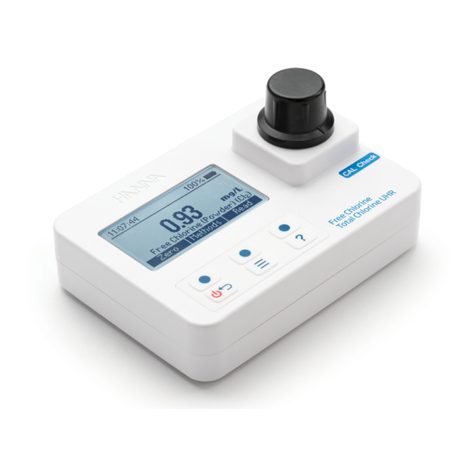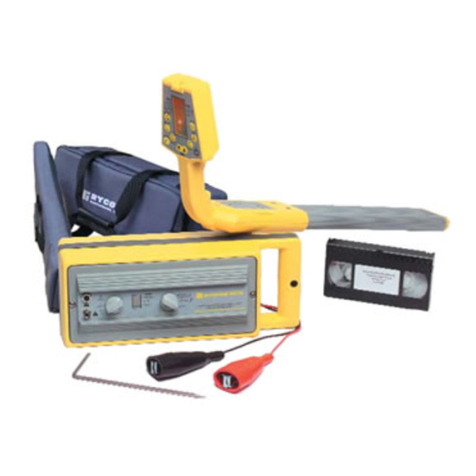Clavis Type 7 User manual

CLAVIS Belt Frequency
Meter Type 7
User Manual

General safety tips
Safety first – read and understand this manual before
operating the CLAVIS Belt Frequency Meter.
Never use your CLAVIS Belt Frequency Meter on moving belts.
Switch off and isolate any
belt drive system prior to
taking tension measurements
or attempting any other
installation work.
Do not drop the meter or
subject either the meter or
the sensor to other sharp
impact.
Do not put water, solvents
(including cleaning solutions)
or any other liquid on the
unit. Clean meter and
sensor with dry cotton cloth.
Do not pull on sensor cable.
Disconnect sensor from
meter by grasping the
connector grip only.
Do not leave the unit in
places that are humid, hot,
dust filled or in direct
sunlight.
Hint:When CLAVIS Belt
Frequency Meter is not used
for a while, remove batteries
and store unit in the case
provided.
Do not use your CLAVIS Belt
Frequency Meter in any
potentially explosive
environment.
Do not disassemble or
attempt to modify either the
meter or the sensing head.

Table of contents
1.0 Device description 4
2.0 Quick start 5
3.0 Functions
3.1 Keys 6
3.2 Audio/ visual display 7
3.3 Optical sensor 8
3.4 Acoustic Sensor 8
3.5 Battery condition 9
3.6 Charging batteries 10
3.7 RS232C serial communication 10
4.0 Setup & use 11
5.0 Operating tips 13
6.0 Meter range 14
7.0 Calibration
7.1 Spot check 15
7.2 Annual certification 16
8.0 Technical specification 17
9.0 Useful formulae and conversions 18
Appendix
1.0 Theory of operation 19
2.0 Limited warranty 20
3.0 Weights and tension values 21
page

4
1.0 Device description
The CLAVIS Belt Frequency Meter is a two component system consisting of
a hand-held meter attached to an sensor via an electronic cable.Two differing
types of sensor are used with the CLAVIS meter.The first is the acoutic sensor
which is available in a range of sizes and profiles.The second is an optical sen-
sor which uses an infrared beam to detect the vibration of a belt strand and
sends a signal to the meter.The detected belt vibration signal is compared with
the vibration of a quartz crystal by the the meter which then computes the
natural frequency of the belt.The result is shown in the display window as hertz
(oscillations per second).The internal programming of the meter is also able to
report the belt tension in units of force (either newton or pounds-force)
provided the operator has entered the belt mass and span length using the
manually operated key pad.
LED aiming
beam
Optical sensor
see section 3.3
Plug in
sensor cable
Display window see
section 3.2
Keypad
see
section
3.1
Acoustic sensor
see section 3.4
LED aiming
beam
Optical sensor
see section 3.3
Plug in
sensor cable
Display window see
section 3.2
Keypad
see
section
3.1
Aco
ust
ic
sen
sor
see section 3.4

5
2.0 Quick start
1. Plug in sensor
2. Press to switch
meter on
3.Aim sensor
at belt, gap 5
to 25 mm
4.Tap or
pluck belt
5. Read belt
frequency (Hz)
or
1. Plug in
sensor
2. Press
to switch
meter on
3. Hold sen-
sor across
the belt. En-
sure that the
sensor does
not touch the
belt
4.Tap or
pluck belt
5. Read belt
frequency (Hz)

6
3.0 Functions
3.1 Keys
ON/OFF
SPAN
(m)
MASS
(kg/m)
UP
(Hz/N)
DOWN
(Lbs)
MEM 1
MEM 2
MEM 3
This key switches the meter on or off. If the meter is on and sits idle
for more than 3 minutes, it automatically switches off to preserve bat-
tery life.When the meter is first switched on a battery check is made
see Section 3.4 for a description
This key is used to enter the belt span length.The span key is held
down while the UP or DOWN keys are used to set the belt span in
metres. Releasing the SPAN key results in an audible beep to indicate
the setting has been accepted. Pressing the SPAN key alone, shows the
current setting.
This key is used to enter the belt mass.The mass key is held down
while the UP or DOWN keys are used to set the belt mass in kg/m.
Releasing the MASS key results in an audible beep to indicate the
setting has been accepted. Pressing the MASS key alone shows the
current setting.
Important Note:
Belt span and belt mass are required entries if tension results in force units
(N or lbf) are desired. Entries must be in SI units (m and kg/m)
This key has two functions.The first is to increase either the SPAN
or MASS parameters when used in conjunction with these keys.The
second use is to toggle between the Hz and the newton measure-
ment modes.
This key has two functions.The first is to decrease either the SPAN
or MASS parameters when used in conjunction with those keys.The
second use is to toggle between the Hz and the pound measurement
modes.
The memory keys allow up to 3 sets of belt parameters to be stored
in the meter registry. Pressing the MEM 1 key recalls the first set of
belt parameters and likewise for MEM 2 and MEM 3.
To store the belt parameters to a key, the belt span and mass param-
eters must first be entered and then immediately after release of
either the SPAN or MASS keys the appropriate MEM key should be
pressed.Two beeps indicate that the parameters have been successfully
assigned to the key.

7
3.2 Audio/visual display
The CLAVIS Belt Frequency Meter is an interactive tool. It provides both visual
and audible communication with the operator. Each signal or combination of
signals has a meaning.While all these signals are discussed in other sections of
this manual, a compilation of all the available signals will be presented here.
Generally visual signals alone give measurement results while audible signals, ei-
ther alone or in combination with a visual signal, indicate some operational step.
Tension displayed
in newton
Frequency mode,
results displayed as hertz
Tension displayed
in pound-force.
Visual
measurement
results
A line segment will
appear to indicate the
units associated with the
number displayed
Audible signals
Signal When Means
One Beep Upon release of “Span” key Input accepted
One Beep Upon release of “Mass” key Input accepted
One Beep While sensor is aimed at vibrating
belt
Measurement taken
Two Beeps Upon pushing “Memory” key after
releasing “Span” key
Span data has been stored
Upon pushing “Memory” key after
releasing 'Mass' key
Mass data has been stored
Four Beeps Combined with “0000” N display Newton result is out of range
Combined with “0000” lb display Pound result is out of range
After pushing “On” key combined
with “zero” countdown
Low battery condition
N
Hz
lbs
N
Hz
lbs
N
Hz
lbs

8
3.3 Optical sensor
The sensor uses an invisible infrared beam
to detect vibrations of the belt.A nar-
row angle orange LED generated beam is
provided to guide the aiming of the sensor.
The very best signal from the belt is seen
when the sensor is held perpendicular to the
belt at the centre of the span at 9,5 mm (3/8
in) distance.When physical restrictions are
present, it is possible to get useable readings
with the sensor up to 50 mm (2 in) distance
from the belt and/or tipped up to 45° from
perpendicular.
It is possible to take measurements from the
edge of the belt.The toothed side of a belt is
equally acceptable as a target for the sensor.
The sensor LEDs should be kept clean by
wiping with a soft cotton cloth. Solvents are
never to be used.
3.4 Acoustic sensor
The acoustic sensor uses a CLAVIS patented
technique for detecting the belt vibration
signal whilst minimising ambient noise.The
acoustic sensor is particularly suitable for
belts which vibrate poorly or where the
amplitude of belt vibration is very small.The
'jaws' of the sensor should be positioned over
the centre of the belt and placed mid length
of the belt span.The sensor should not be
allowed to touch the belt as this will reduce
the belt vibration signal.A range of sensors
is available to suit belts of differing widths.
The standard Type 3 sensor is suitable for all
automotive applications.

9
3.5 Battery condition
When the CLAVIS Belt Frequency Meter is first switched on, a battery condi-
tion check is automatically performed.A low battery condition is signalled both
visually and audibly.The display window will flash an array of zeros, starting with
four and progressing to only one.There will be an audible signal of four “beeps”
as the display changes
If these signals are seen and heard, batteries should be replaced. Batteries are
accessed through the removable cover on the back of the meter. New batteries
should be inserted within 30 seconds of removal of old batteries.Taking longer
risks loss of any data stored by the memory keys. Batteries are expected to
provide approximately 20 hours of continuous operation before replacement
is required when the optical sensor is used. Over 100 hours of use is possible
when the acoustic sensor is used.
N
Hz
lbs
N
Hz
lbs
N
Hz
lbs
N
Hz
lbs
BEEP
BEEP
BEEP
BEEP

10
3.6 Charging batteries
Do not charge batteries with the sensor head attached to the meter. Do not
attempt to use the meter while batteries are being charged.
The CLAVIS Belt Frequency Meter is compatible with rechargeable
batteries and charging unit.A convenient 3,5 mm, positive centre charging
socket is located on the bottom end of the meter body adjacent to the sensor
cable plug-in port.
Batteries: 1 300 mAh minimum (IDS accessory)
Charging unit: 12 to 15 volt DC output (IDS accessory)
Connection: 3,5 mm positive tip mini plug/socket
The built in circuit of the meter controls the charging current. Charging current
is internally limited to 100 mA. Charging time is typically 12 to 14 hours for a
full charge.
You may turn the unit on while charging.The meter’s software will then signal
that the batteries are charging.The display window will flash an array of zeros,
starting with only one and progressing to four.There will be an audible signal of
four 'beeps' as the display changes.
Suitable rechargeable batteries and charger may be obtained directly from IDS.
3.7 RS232C serial communication
CLAVIS TYPE 7 - REV 7.010699
250 HZ
250 HZ
250 HZ
3124 N
0702 LBS
Each time a reading is taken the value is transmitted through the RS232 serial
port.The following protocol is employed; Baud Rate 9600, 8 data bits, 1 stop
bit.The value string is terminated by a ‘CR’, (Decimal 13). Output is through a 9
way ‘D’ type plug, (Pin 5 common, Pin 3 Transmit). Handshaking is not employed.
An example of the text output is shown below.
Charging
socket
Serial port
9 way 'D' type

11
4.0 Setup and use
1. Plug sensor head into meter body.
This is a keyed plug. Line it up, do not
use force!
2.Turn unit on using .
3. Load span and mass data or recall previously loaded data.
To load span data simply hold down while using
or to set the number.
When the correct number appears in the display window, simply release the
span key.The unit will beep once to acknowledge acceptance of this setting.
To load mass data simply hold down while using
or to set the number.
When the correct number appears in the display window, simply release the
mass key.The unit will beep once to acknowledge acceptance of this setting.
To save individual entries into memory, press appropriate key
, or .
As soon as the span or mass keys have been released, the meter will beep twice
to acknowledge the entry into memory.
MEM 1 MEM 2 MEM 3
ON/OFF
SPAN
(m)
DOWN
(Lbs)
UP
(Hz/N)
MASS
(kg/m)
DOWN
(Lbs)
UP
(Hz/N)

12
4.Aim sensor at centre of selected belt span.Tap or
pluck the belt.The meter will beep once to indicate
that a measurement was taken.
5. Display window will show frequency result.
6. Press to toggle to newton.
7. Press to toggle to pounds.
Note: Pressing the same key a second time will return display to the hertz value.
8. Re-adjust belt tension and repeat measurement until target tension results
are attained.
MEM 1 MEM 2 MEM 3
To recall stored span and mass data simply press , or .
Depending upon where you stored the data for this specific drive.
N
Hz
lbs
N
Hz
lbs
N
Hz
lbs
DOWN
(Lbs)
UP
(Hz/N)
or
Place sensor across the selected belt span at
the mid-span position. Make sure that the jaws
of the sensor do not touch the belt.
Position the sensor so that the sensing
elements are located mid-width of the belt.
(Acoustic sensors are available from IDS for
all widths of belts).Tap or pluck the belt.The
meter will beep once to indicate that a meas-
urement was taken.
Gap 10
to 50
mm

13
5.0 Operating tips
Here are some procedures and “best” practices that may ease use or help
increase the reliability of your belt tensioning efforts.
Take your tension reading as close to the centre of the selected span as
practical.
Use the longest belt span that can be readily accessed. Minimum useable span
length is equal to 20 times the belt tooth pitch for synchronous belts and 30
times the belt top width for “v” configuration belts. Using too short a span
yields indicated tensions that may be much higher than actual belt tension due
to effects of belt stiffness.
Where possible, orientate the sensor head with the long edge of the sensor
parallel to the centre-line of the belt.This tends to eliminate any non-reading
conditions due to aiming error.
On new installations, rotate the system by hand at least one full revolution of
the belt to seat and normalise the components.
If the top surface of the belt is not accessible, try to beam the sensor against
the edge of the belt.The inside surface of the belt is equally acceptable.
The meter will not give a measurement for a belt under extremely low tension.
Simply increase the drive tensioning until the meter responds.The meter will
beep to indicate that a reading has been taken.
It is good practice to take three successive readings.This will show the consist-
ency of your methods. If the readings vary by more than 10% reassess your
measurement technique.
Taking multiple readings at different belt orientations may help you identify
problems with other drive components.Tension excursions are indicative of
component problems such as a belt shaft, poorly mounted sprocket or pulley or
an irregular pulley groove.
When tensioning an array of multiple V-belts, use a single belt toward the centre
of the array.

14
6.0 Meter range
The CLAVIS Belt Frequency
Meter is capable of
measuring belt vibration
frequencies between 10 Hz
and 600 Hz.
If the measured frequency is
below 10 Hz, the meter will
display “10.00” briefly and
then change to “000.0”.
If the measured frequency is
above 600 Hz, the meter will
display “600” briefly and
then change to “000”.
On multi-shaft (three or more shafts) it may be possible to get valid
measurements by selecting a different belt span for measurement. If the
measured frequency is below 10 Hz choose an available shorter span. If the
measured frequency is above 600 Hz choose a longer span if available.
Based upon the measured belt frequency, the meter is capable of calculating belt
tensions up to 9 990 N (2 200 lb.).When these limits are exceeded the meter
will react as previously described.
Belt tensions greater than these values are unusual. It is therefore advisable
to check that the span and mass parameters have been entered correctly. If
they are found to be correct then check the calculation of your target values.
If everything looks correct then this drive is simply beyond the capacity of the
CLAVIS Belt Frequency Meter.The drive will have to be tensioned by traditional
force and deflection techniques.
Special Note:
Tensioning a drive generally involves moving one component shaft with respect
to another. On some drives, especially larger installations, tensioning the drive
will involve sufficient movement that the span length is appreciably altered.
Frequency (Hz) values will remain accurate but if a precise tension value is to
be calculated it may become necessary to update the span input to reflect the
new shaft spacing.
N
Hz
lbs
N
Hz
lbs
A '0000' newton reading
accompanied by four
'beeps' indicates the
result is out of range
A '0000' pound reading
accompanied by four
'beeps' indicates the
result is out of range
BEEP
BEEP
BEEP
BEEP
BEEP
BEEP
BEEP
BEEP

15
7.0 Calibration
7.1 Spot check
The measurement system of the CLAVIS Belt Frequency Meter is based upon a
very stable quartz crystal that should never wander. However, a precision
mechanical resonator (tuning fork) is included with the meter so that a
calibration check at a spot frequency of 250 Hz may be performed at any time.
Tap the tip of the
tuning fork on a
hard surface and
then hold STEADY
in front of the
optical sensor at a
distance of 10 to
15 mm.The meter
will measure a
frequency of 250
Hz thus
demonstrating that
it is in calibration.
Results within ±1% are acceptable.There is no adjustment possible. If greater
variance is experienced, the meter should be returned for calibration. See
section 7.2 for manufacturer’s contact information.
Tap the tip of the
tuning fork on a
har
d s
urf
ace
an
d
the
n h
old
ST
EAD
Y
Y
Y
Y
Y
Y
Y
Y
Y
Y
Y
Y
Y
Y
Y
Y
in front of the
optical sensor at
a
distance of 10 to
15 mm.The mete
r
wil
l m
easure a
fre
que
ncy
of 250
Hz
thu
s
demonstrating that
it is in calibration.
Tap the tip of the tuning fork and hold steady
between the jaws of the acoustic sensor.The
meter will measure 250Hz.

16
7.2 Annual certification
Technical support relating to calibration certification and/or operation of the
CLAVIS Belt Frequency Meter can be obtained from the manufacturer at:
phone: +44 191 262 7869
fax: +44 191 262 0091
The meter may be returned to the manufacturer for repair or recalibration at
any time.
A factory calibration certificate is included with each meter. Although the very
stable solid-state quartz crystal based system is not likely to go out of
calibration, some operating procedures call for annual gauge certification. For
certification/calibration purposes the meter may be returned to the
manufacturer at yearly intervals to have the meter recalibrated and certified to
NAMAS/ UKAS (National Accreditation of Measurement and Sampling/United
Kingdom Accreditation Standards) standards.
The manufacturer must be contacted for detailed costs and shipping
procedures prior to any return. Contact information for Integrated Display
Systems Limited (IDS) is shown in Appendix 2.
There will be a charge for these services.

17
8.0 Technical specification
Measurement range
Frequency range .................................. 10 to 600 Hz
Measurement accuracy
Below 100 Hz............................... ± 1 significant digit
Above 100 Hz................................ ± 1%
Belt mass input range .......................... 0,001 to 9,990 kg/m
Belt span input range .......................... 0,001 to 9,99 m
Maximum belt tension display ............ 9 990 N
2 200 lb
Environmental conditions
Operating temperature ........................ +10 to +50 °C
Shipment and storage temp ............... - 40 to +70 °C
Protection class...................................... IP54
Sensor Optical
Type.......................................................... Infrared optical
IR wavelength......................................... 970 mm
Visible aiming beam.............................. Narrow angle orange LED
Housing .................................................. Machined aluminium
Cable length ........................................... 1 m
Sensor Acoustic
Type.......................................................... Twin transducer noise cancelling
Housing .................................................. Cast aluminium
Cable length ........................................... 1 m
Power supply
Battery type............................................ AA (MN1500) Alkaline only
Number .................................................. 4
Expected life............................................ 20 hrs (Optical sensor)
100 hrs (Acoustic sensor)
Compartment location .......................... Back of meter
Optional rechargeable batteries
Battery type............................................ AA (1 300 mAh minimum)
Charger.................................................... 12 to 15 V DC output
Socket/polarity........................................ 3,5 mm positive centre

18
9.0 Formulae and
conversions
Force conversion constants
newton x 0,2248 = lb
pound x 4,4482 = N
kilogram x 9,8067 = N
Length conversion constants
inch x 0,0254 = m
metre x 39,3701 = in
mm x 0,001 = m
Span length calculation
S =
where:
S = Span length (mm)
CD = Centre distance (mm)
D = Large pulley diameter (mm)
d = Small pulley diameter (mm)
Weight (for mass calculation use)
ounce x 0,02835 = kg
pound x 0,45359 = kg
Reminder: Belt span and mass inputs to the meter must be in SI units, m for the
belt span and kg/m for the belt mass.
(D - d)2
4
-CD2

19
Appendix
1.0 Theory of operation
There is a direct relationship between belt tension and a belt’s natural fre-
quency of vibration.As the tension is increased, the vibration frequency also
increases.The relationship between tension and frequency has been determined
to be:
T = 4ml 2f 2
Where
T = Belt tension (N)
m= mass per unit length (kg/m)
l = span length (m)
f = vibration frequency (Hz)
The CLAVIS Belt Frequency Meter is a dual function tool.The optical sensing
head uses an invisible infrared beam to detect vibration.The acoustic sensing
head uses the almost inaudible acoustic signal from the belt to detect
vibration.The integral calculator within the meter determines the time base and
performs the necessary calculations to support the results shown in the display
window.
The meter may be used with all power transmission belts regardless of type or
construction.

20
2.0 Limited Warranty
Limited Warranty Time of warranty is 12 months from date of original purchase
provided that proper product registration has been completed. Product
registration may be completed online
at; www.clavis.co.uk/registration
Warranty covers defects in materials and workmanship for the device only.
Warranty does not cover accessory items such as batteries and applies only
to parts that were not damaged as a result of inappropriate handling or use.
The warranty expires immediately if the device itself is opened. Unit must
be returned to Integrated Display Systems Ltd (IDS) for evaluation of all
warranty claims.Any CLAVIS Belt Frequency Meter claimed to have a covered
warranty condition involving material or workmanship shall, upon IDS’s
approval, be returned to IDS as designated, at the Customer’s expense. Under
no circumstances will liability exceed the original purchase price of the meter.
IDS reserves the right to repair or replace the unit or to refund the original
purchase price at their sole option.
Limitation of Warranty: IDS excludes any further liability for software,
handbooks and information material. Furthermore, IDS does not accept liability
for damages resulting from the use of the CLAVIS Belt Frequency Meter.
IDS’s total responsibility and liability for any and all claims, losses and damages
of any kind whatsoever arising out of any cause whatsoever (whether under
any warranty or based contract, negligence, other tort, strict liability, breach of
warranty, other theory or otherwise) shall not exceed the original purchase
price of the CLAVIS Belt Frequency Meter in respect to which such cause
arise, and in no event shall IDS be liable for special, incidental, consequential,
exemplary, or punitive damages resulting from any such cause. No employee,
agent and/or representative, promise or agreement, except as stated herein. IDS
shall not be liable for, and customer assumes all liability for, all personal injury
and property damage connected with the use of the product.There are no
warranties which extend beyond the description on the face hereof, and IDS
disclaims warranty of fitness for purpose or any other implied warranties.
Contact IDS Customer Service for warranty claims, product return procedure
or technical information.
Integrated Display Systems Limited (IDS)
Tel: +44 (0) 191 262 7869
Fax: +44 (0) 191 262 0091
www.clavis.co.uk
Table of contents
Popular Measuring Instrument manuals by other brands
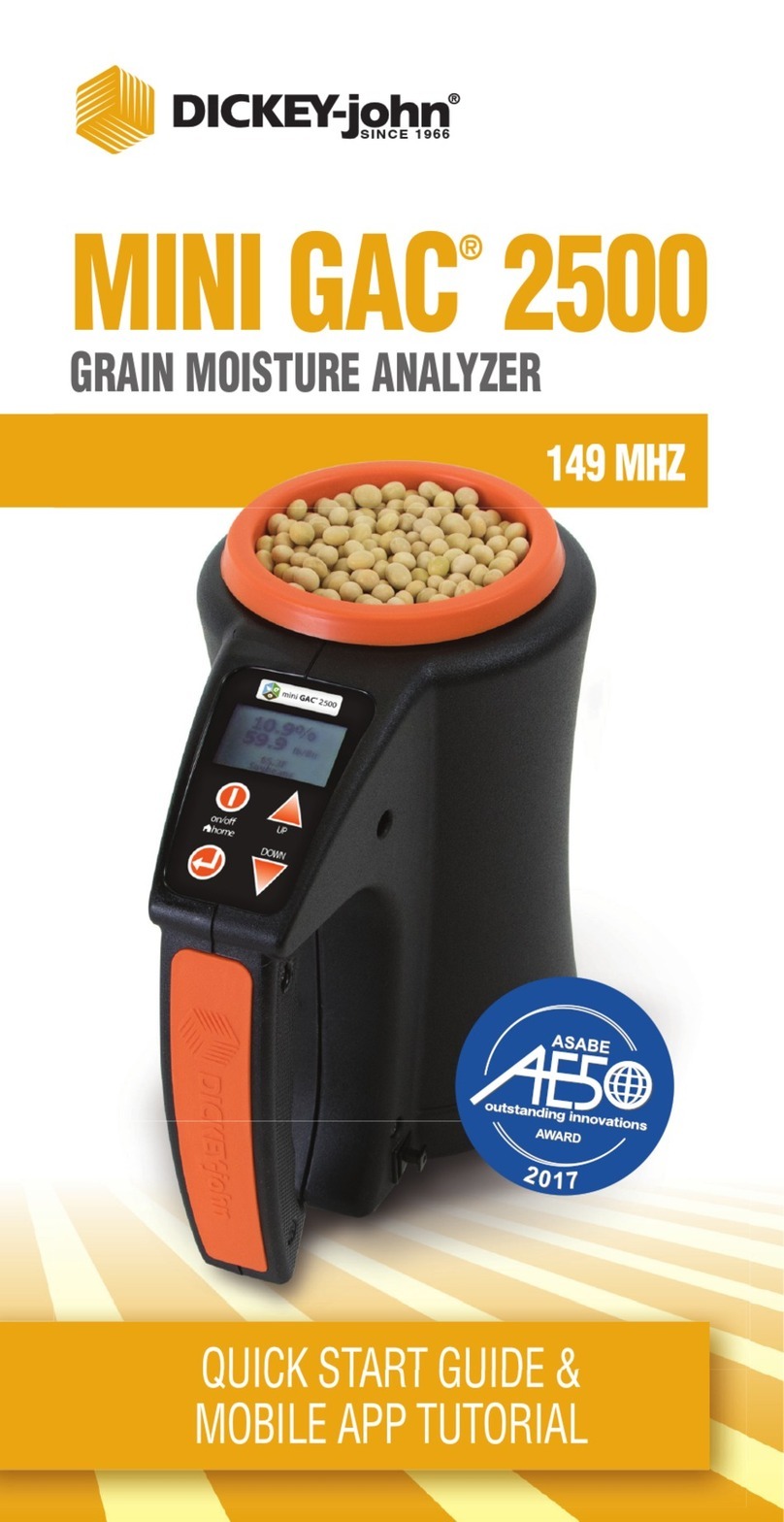
Dickey-John
Dickey-John GAC 2500 QUICK START GUIDE & MOBILE APP TUTORIAL
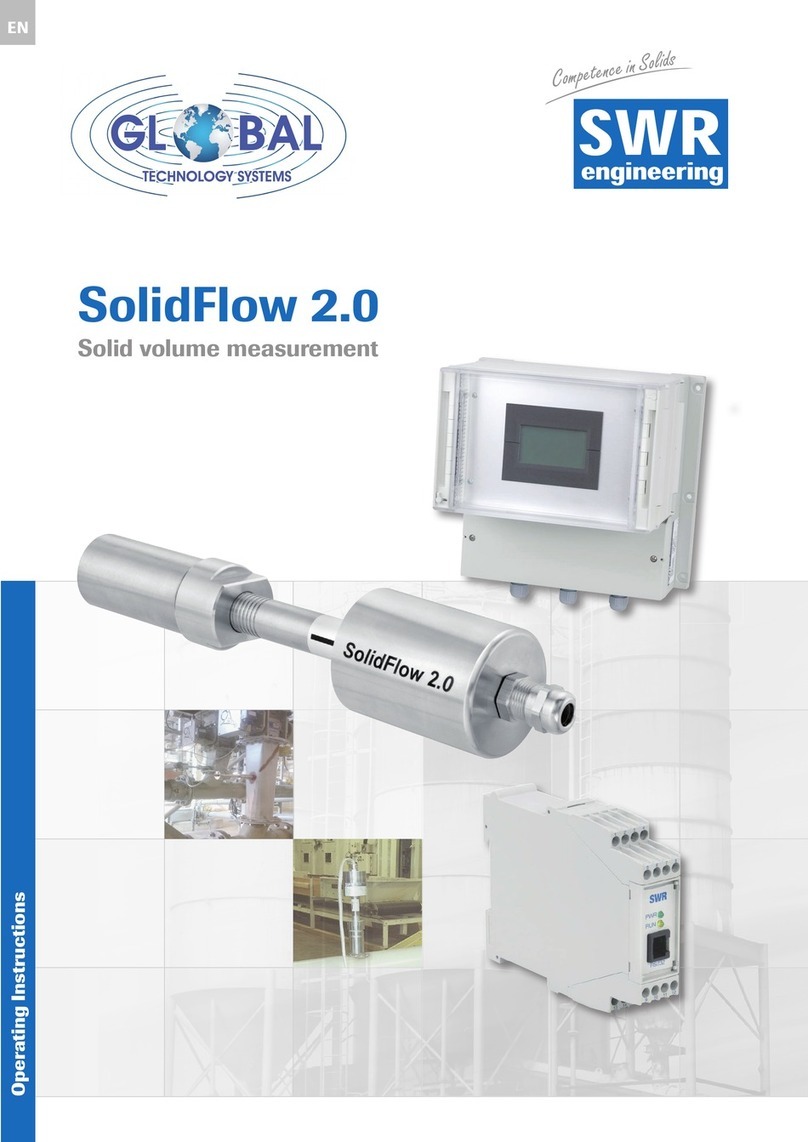
SWR
SWR SolidFlow 2.0 operating instructions

Teledyne Lecroy
Teledyne Lecroy Frontline Sodera LE quick start guide
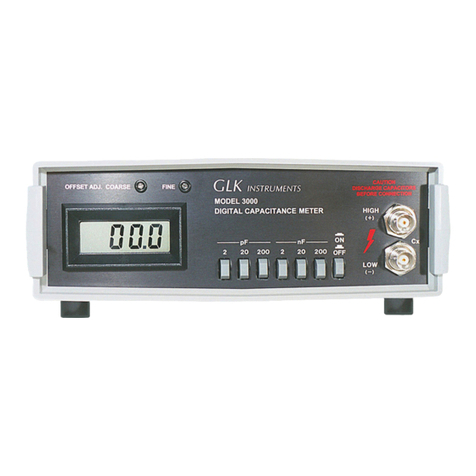
GLK
GLK 3000 Operation and calibration manual

Leaptronix
Leaptronix LA-100P user manual
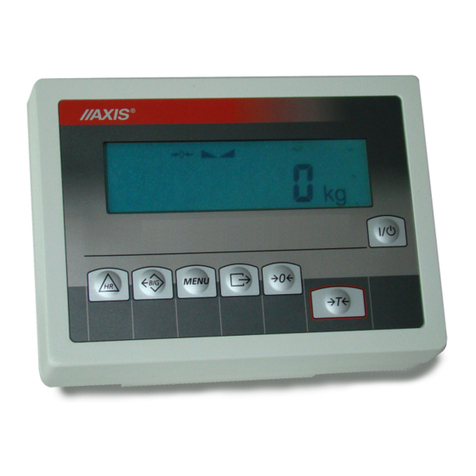
Axis
Axis ME-01 Engineering documentation
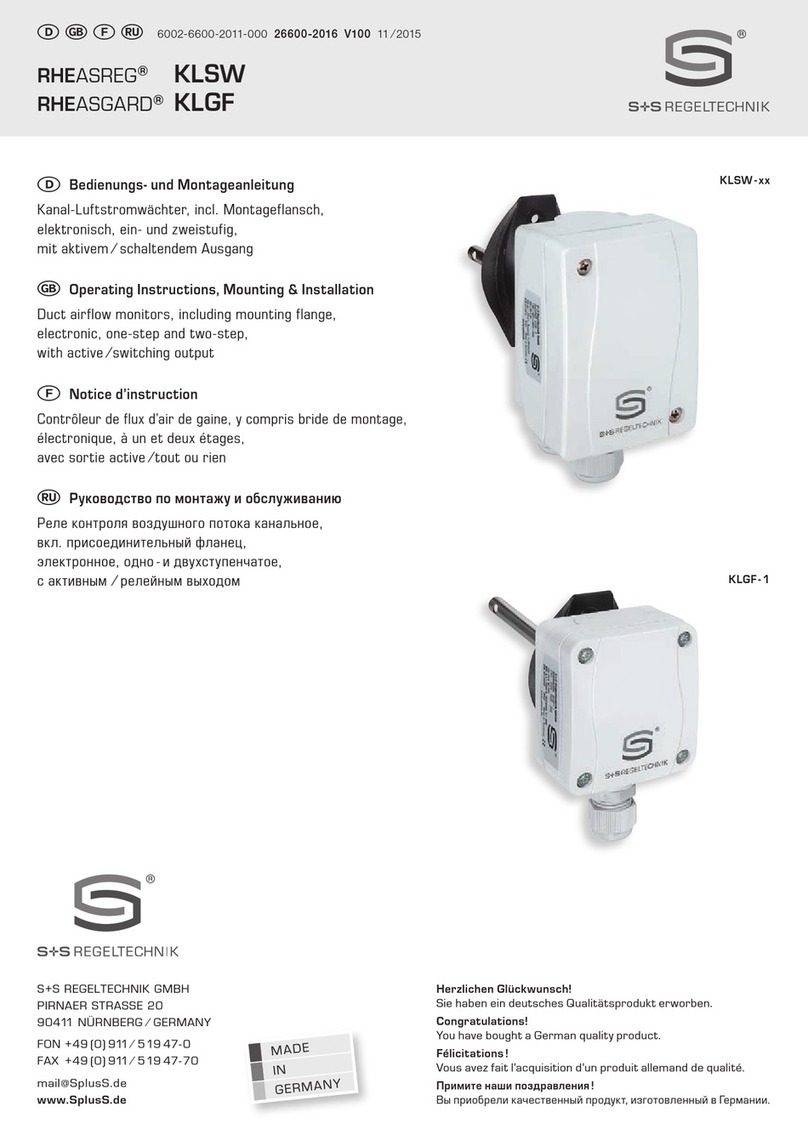
S+S Regeltechnik
S+S Regeltechnik RHEASPEG KLSW Series Operating Instructions, Mounting & Installation
geo-FENNEL
geo-FENNEL FL 270VA TRACKING user manual
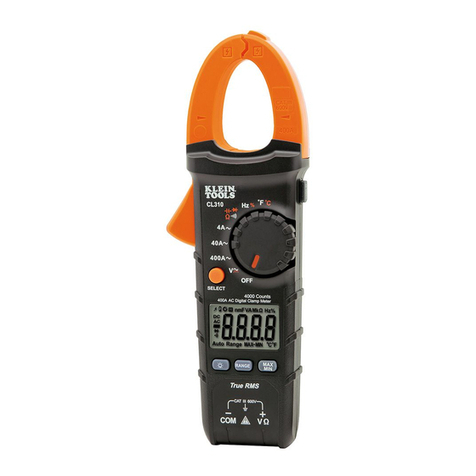
Klein Tools
Klein Tools CL310 instruction manual

Seaward
Seaward Solar Survey 100 Quick reference guide
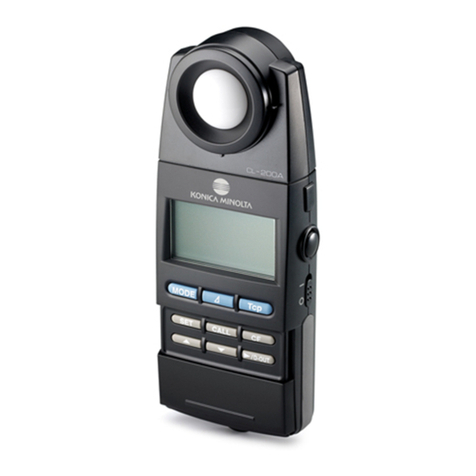
Konica Minolta
Konica Minolta CL-200A instruction manual
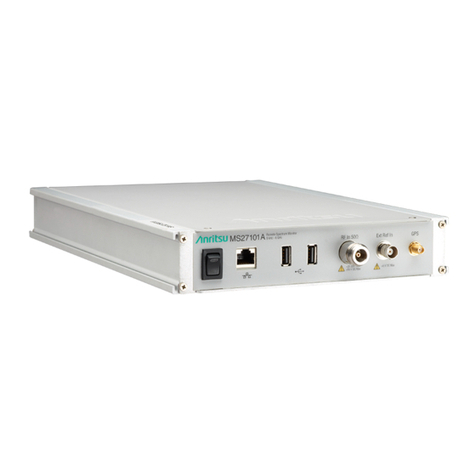
Anritsu
Anritsu MS27100A Configuration Quick Start Guide



